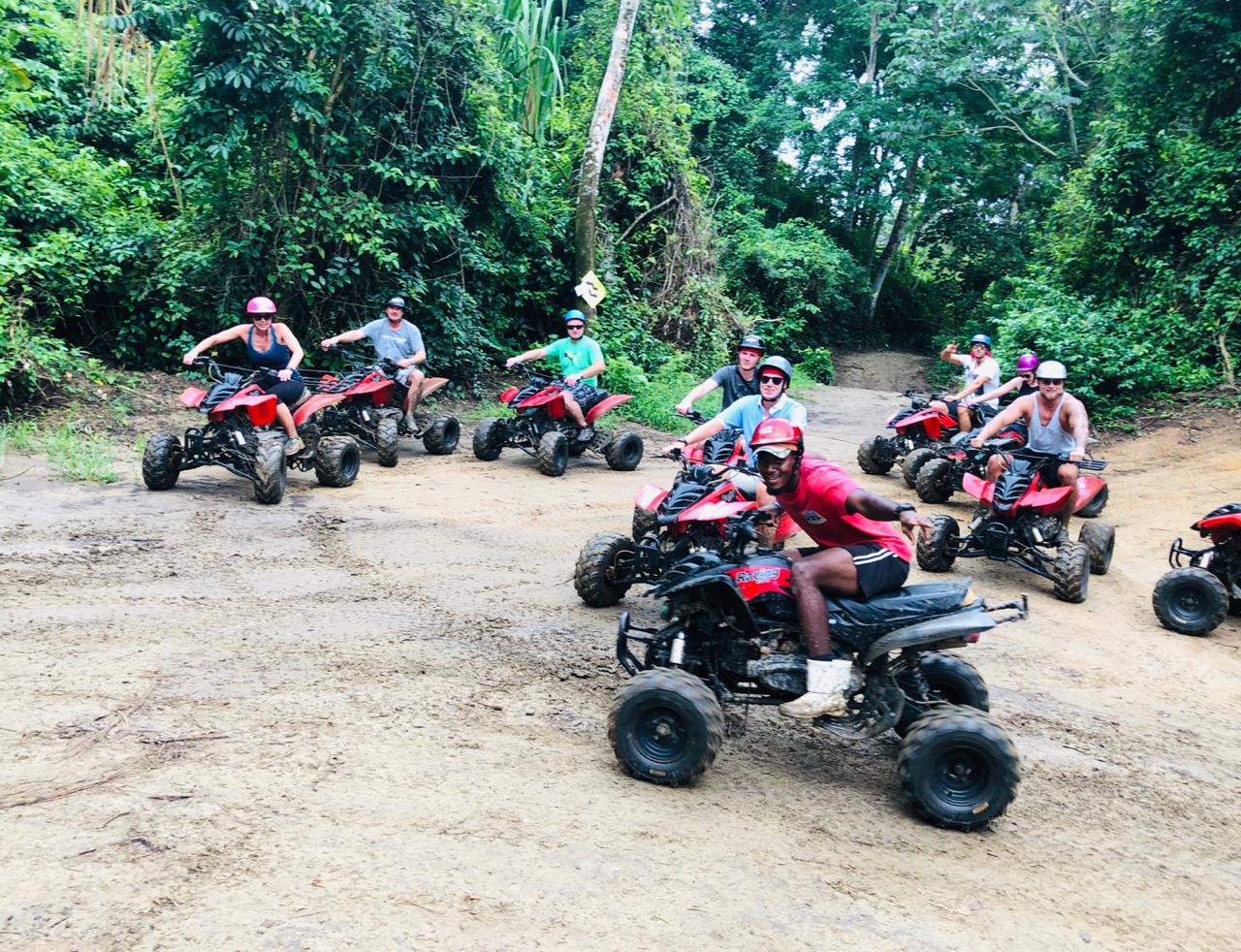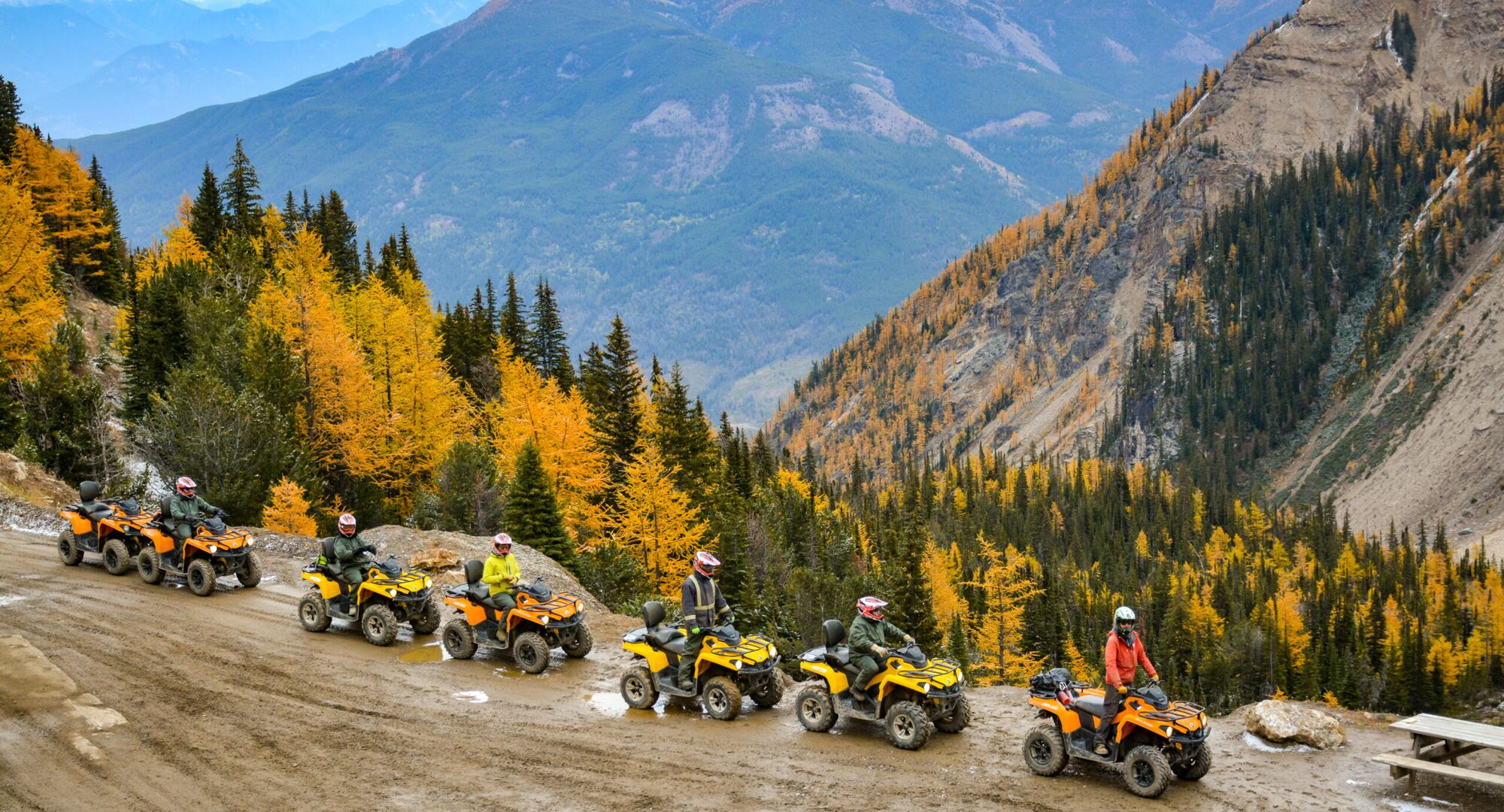ATV Bliss Waits For: Locate Your Perfect Trip Today
Wiki Article
Grasping the Trails: ATV Riding Tips and Methods
Mastering the Trails: ATV Riding Tips and Techniques is a comprehensive guidebook designed to furnish bikers with the expertise and skills needed to navigate off-road surfaces with confidence and precision. With an emphasis on safety and ability development, Understanding the Trails is a must-have for ATV fanatics looking to improve their riding capabilities and take on any type of route with skill.Importance of Appropriate Body Positioning
Appropriate body positioning is essential for taking full advantage of control and security while riding an ATV. When riding off-road vehicles like ATVs, preserving the right body setting is vital for achieving ideal control and security. By placing your body properly, you can properly disperse your weight and navigate the ATV much more successfully, allowing for a much safer and a lot more enjoyable adventure.This implies maintaining your body upright and focused over the ATV at all times. Additionally, maintaining your body upright allows you to much better absorb shocks and bumps, lowering the effect on your body and boosting total convenience.
Moreover, it is very important to grip the handlebars securely and maintain your arms somewhat bent. This setting enables far better control and maneuverability, as it enables you to promptly reply to changes in terrain or unanticipated obstacles. Keeping your arms loosened up and somewhat curved also assists soak up vibrations and shocks, minimizing fatigue and enhancing total control.
Tips for Navigating Uphill and Downhill Trails
When browsing uphill and downhill routes on an ATV, cyclists have to use strategic strategies to safely and properly maneuver with varying terrains. This helps to stop the ATV from turning backwards.
Understanding Limited Turns and Maneuvering Obstacles
To effectively navigate tight turns and maneuver barriers on an ATV, bikers should utilize effective techniques and keep a concentrated strategy. When approaching a tight turn, it is essential to reduce and shift your body weight towards the within the turn. This helps preserve balance and control throughout the maneuver. Furthermore, leaning forward and clutching the handlebars strongly permits for far better control over the ATV's guiding. It is very important to keep in mind to look ahead, focusing on the preferred path instead of infatuating on the challenges or the turn itself. By looking in advance, cyclists can expect any possible difficulties and adjust their speed and body position as necessary - atv.When it pertains to steering challenges, such as rocks, dropped trees, or deep ruts, riders must approach them with caution. see this website It is a good idea to reduce speed and stand on the footpegs to absorb the impact. Maintaining a loose hold on the handlebars and permitting the ATV to move below you will aid maintain balance and control. Meticulously choose your line and prevent unexpected movements, as jerky actions can cause loss of control. Keep in mind to always use proper safety and security equipment, such as a headgear, safety glasses, handwear covers, and safety apparel. These methods, coupled with method and experience, will certainly allow cyclists to with confidence navigate tight turns and get over obstacles on their ATV experiences.
Essential Safety Precautions for ATV Riding
ATV motorcyclists need to focus on adhering to vital safety and security precautions to make certain a safe and secure and pleasurable riding experience. These security preventative measures are essential in minimizing the dangers linked with ATV riding and securing the biker from possible crashes or injuries.Additionally, it is critical to acquaint oneself with the ATV and its controls before riding. Examining the ATV's condition before each trip is additionally important.

Methods for Riding in Different Terrains
Acquainting oneself with the techniques for riding in various terrains is necessary for ATV bikers to browse numerous landscapes safely and effectively. Each terrain offers its own difficulties and calls for particular abilities and strategies to guarantee a controlled and smooth trip.When riding on irregular and rocky surfaces, it is crucial to preserve an unwinded and balanced position. Maintaining your body adaptable and loosened will allow you to preserve and soak up shocks control over the ATV. In addition, it is essential to preserve a consistent rate and stay clear of abrupt acceleration or braking, as this can cause loss of grip and possible crashes.
For sandy or muddy terrains, it is suggested to minimize tire stress to boost grip. Reducing the tire stress permits the tires to grasp the ground much better, protecting against the ATV from obtaining learn this here now stuck. It is also advisable to utilize a higher equipment and keep a consistent rate to avoid the wheels from spinning and excavating right into the terrain.
When riding on steep slopes or decreases, it is essential to shift your body weight onward or in reverse to maintain equilibrium. Leaning onward while climbing uphill will prevent the ATV from turning backwards, while leaning in reverse while coming down will certainly avoid the ATV from turning forward. Furthermore, it is necessary to make use of the appropriate gears and avoid abrupt acceleration or braking, as this can cause loss of control and prospective crashes.
Conclusion
To conclude, understanding ATV riding requires correct body placing, experienced navigating of uphill and downhill tracks, and the capacity to navigate tight turns and challenges. It is also crucial to focus on safety by taking essential safety measures. Additionally, motorcyclists need to be proficient at riding in different surfaces for an all-round experience. By exercising these methods and following safety and security guidelines, ATV motorcyclists can enhance their abilities and delight in the routes to their fullest capacity.When tackling downhill tracks, motorcyclists need to shift their body weight in reverse to keep stability and prevent the ATV from turning ahead.To efficiently navigate limited turns and maneuver barriers on an ATV, motorcyclists must use efficient strategies and preserve a focused technique.ATV cyclists should focus on sticking to critical safety and security preventative measures to guarantee a safe and satisfying riding experience. These safety and security preventative measures next page are crucial in minimizing the risks linked with ATV riding and protecting the rider from possible crashes or injuries. Leaning ahead while climbing uphill will prevent the ATV from turning backward, while leaning backward while coming down will certainly stop the ATV from flipping forward.
Report this wiki page